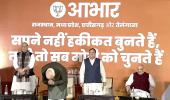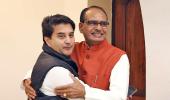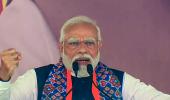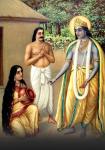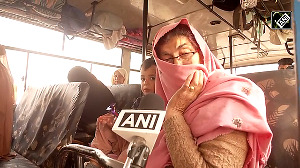The number of women MLAs in Chhattisgarh, Telangana, and Madhya Pradesh assemblies remains much below the one-third mark, as provided under the women's reservation bill passed by Parliament recently, data compiled by think tank PRS Legislative Research said.

Their number in Chhattisgarh, Telangana and Madhya Pradesh assemblies has gone up marginally, while it has gone down in Rajasthan, the data said.
Chhattisgarh scores the highest among all four states with 21 per cent of its newly elected lawmakers women.
In 2018, Chhattisgarh had 13 women MLAs, 14 per cent of the total, which has gone up to 19 women now.
In Telangana, the number of women MLAs went up to 10, or 8 per cent of the total. In 2018, the state sent six women to its assembly.
In Rajasthan, the number of women MLAs was 24 in 2018, which came down to 20 this time. Their number in Rajasthan assembly has never exceeded 15 per cent, the report said.
In Madhya Pradesh, 30 women were elected to the assembly in 2013, while in 2018, only 21 women could find a place in the House. This time, the state has elected 27 women.
The number of older MLAs also remains high in all assemblies, with Chhattisgarh, MP, and Telangana seeing their assemblies grow older.
In Chhattisgarh, the proportion of MLAs above the age of 55 years is 41 per cent in the new assembly.
In 2008, the state had 16 per cent of MLAs above this mark, with the number going up to 29 per cent in 2013, and to 40 per cent in 2018.
In MP, 50 per cent of MLAs are above the age of 55 this time. This proportion was 38 per cent in 2018, 30 per cent in 2013, and 21 per cent in 2008.
In Rajasthan, in 2018, 48 per cent of the elected members (95 out of 200), were above 55. The proportion has marginally decreased in the new Assembly, settling at 46 per cent.
In Telangana, the average age of the newly elected MLAs is 56. The proportion of MLAs above 55 there has increased from 39 per cent in 2018 to 60 per cent in 2023.
When it comes to education, in Chhattisgarh, the proportion of MLAs with at least a graduate degree has reduced from 69 per cent in 2018 to 59 per cent in 2023.
In MP, the proportion of MLAs with graduation degree was 44 per cent in 2018.
It has come down to 36 per cent in the latest assembly, while the number of post-graduates has gone up from 27 per cent to 35 per cent.
A majority of the MLAs in Rajasthan have a graduate degree. In 2018 more than half of the elected women and about a quarter of the elected men were post-graduates. The proportion remains similar in 2023.
In Telangana, 72 MLAs elected in 2023 have at least a graduate degree. This is 15 per cent lower than the number in 2018, when it was 85.
